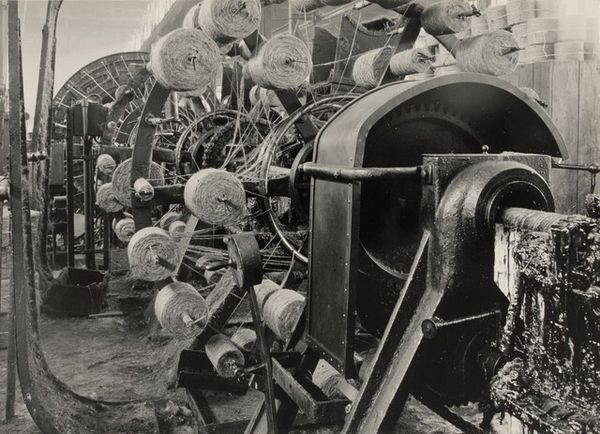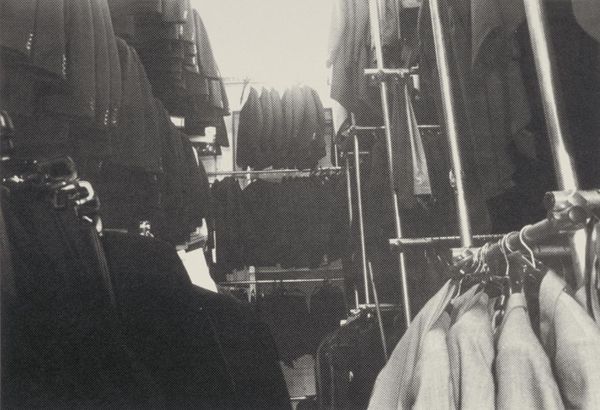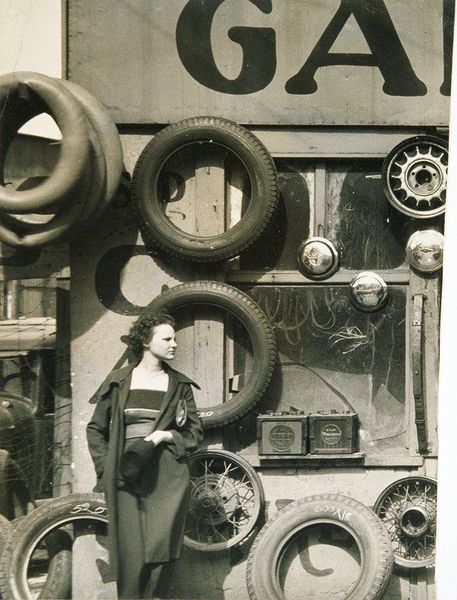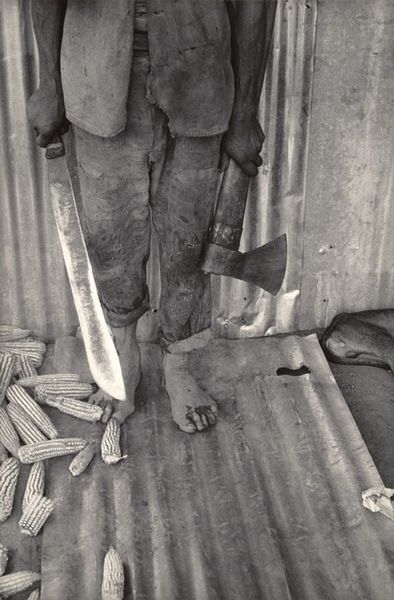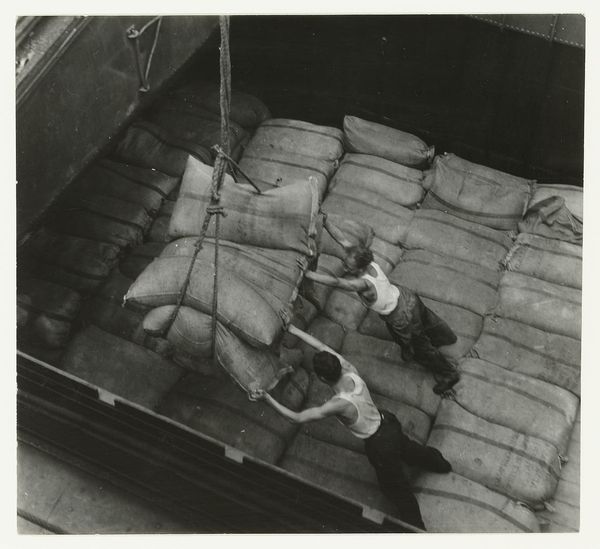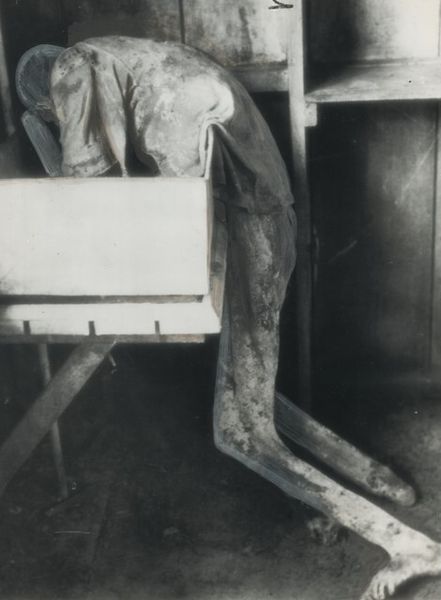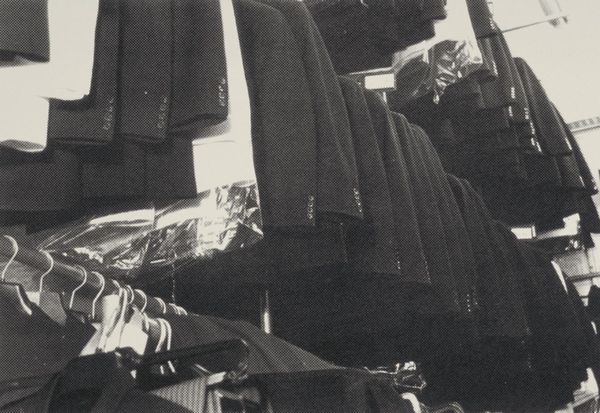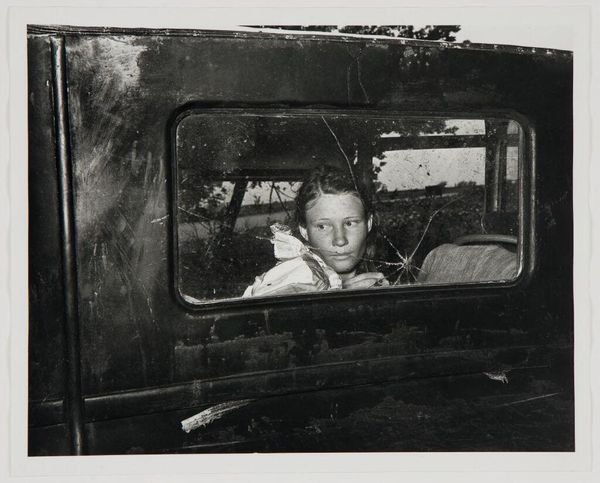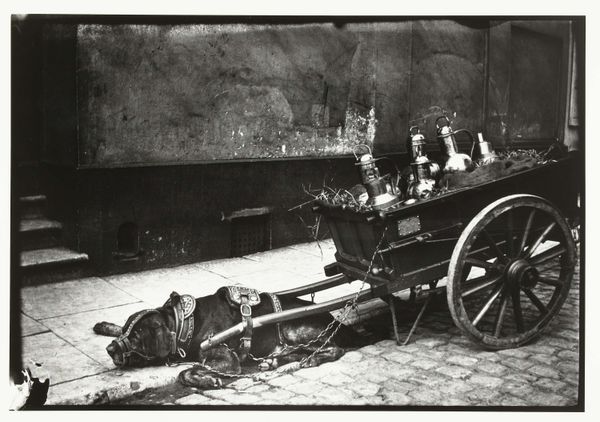
photography, gelatin-silver-print
#
portrait
#
black and white photography
#
sculpture
#
photography
#
black and white
#
gelatin-silver-print
#
monochrome photography
#
ashcan-school
#
monochrome
#
modernism
Dimensions: image: 22.2 × 30.9 cm (8 3/4 × 12 3/16 in.) sheet: 40.5 × 50.3 cm (15 15/16 × 19 13/16 in.)
Copyright: National Gallery of Art: CC0 1.0
Editor: This is Nathan Lerner's gelatin-silver print, "Uncommon Man," created in 1936. I’m immediately drawn to the textures and how the monochrome enhances the almost surreal composition. What do you see in this piece through your own lens? Curator: What strikes me is the calculated composition, the dynamic interplay of light and shadow sculpting the forms within. Notice how the sharp focus on the bust contrasts with the softer details of the background and surrounding elements of the car. It seems the photograph prioritizes certain formal elements, what do you think that emphasis conveys to us? Editor: I guess it suggests a sort of reverence, doesn’t it? Highlighting certain textures, making them monumental through lighting. Like, a classical bust put on wheels…But it’s all framed by this utilitarian vehicle. Does the Ashcan School element factor into this treatment, creating a more socially conscious context to Lerner’s piece? Curator: Indeed. Consider the contrast between the dignified subject matter—the bust of Lincoln—and its unexpected placement. The geometry and repetition established by the wheels against the clear edges of the statue speak volumes about our subject. How the use of the same tones creates a strange harmony between high and low cultures within a dynamic modern world. What feeling does that arrangement elicit? Editor: It's thought-provoking, how those different forms of American ideology - progress and tradition - blend together into something almost alienating. Seeing those structures made bare, I almost wonder where the artist draws the line. Curator: An astute observation. Perhaps, it underscores the inherent tensions and paradoxes within the American narrative itself. The structure of an artwork itself gives us as much insight into cultural and social meanings as any representational motive might offer. Editor: I didn't think of it like that; breaking it down to structure instead of symbolism reveals entirely new relationships and lets me ask more questions. Thanks for offering that new perspective. Curator: It’s been my pleasure. Exploring the structure allows us new points of reference.
Comments
No comments
Be the first to comment and join the conversation on the ultimate creative platform.
